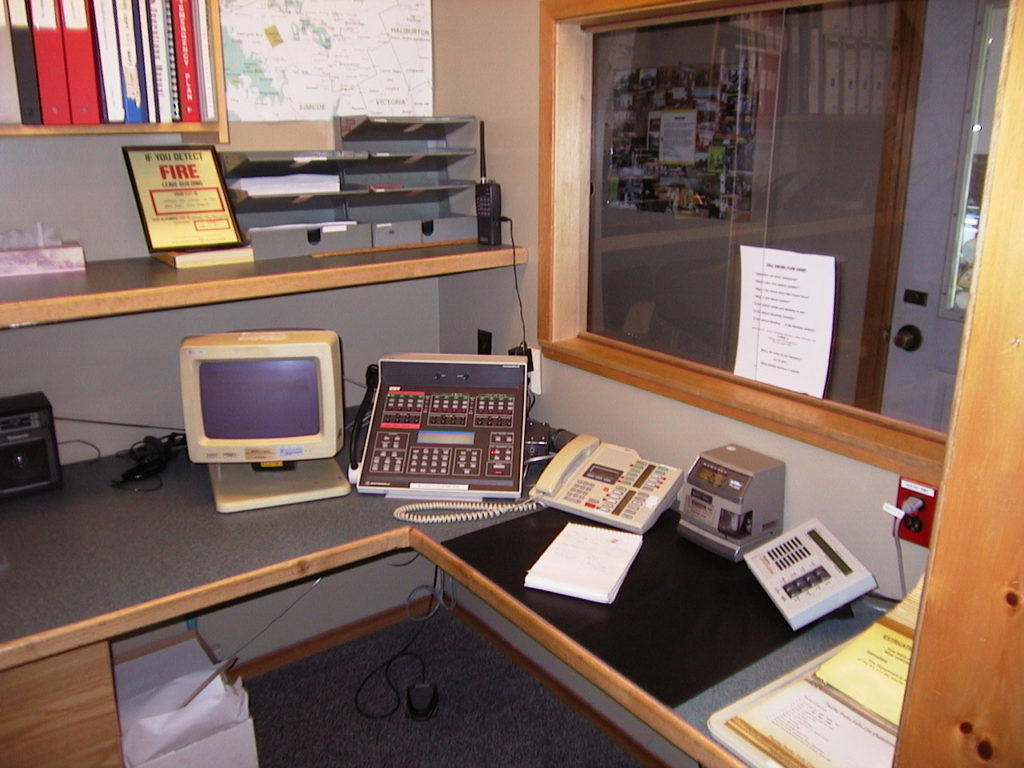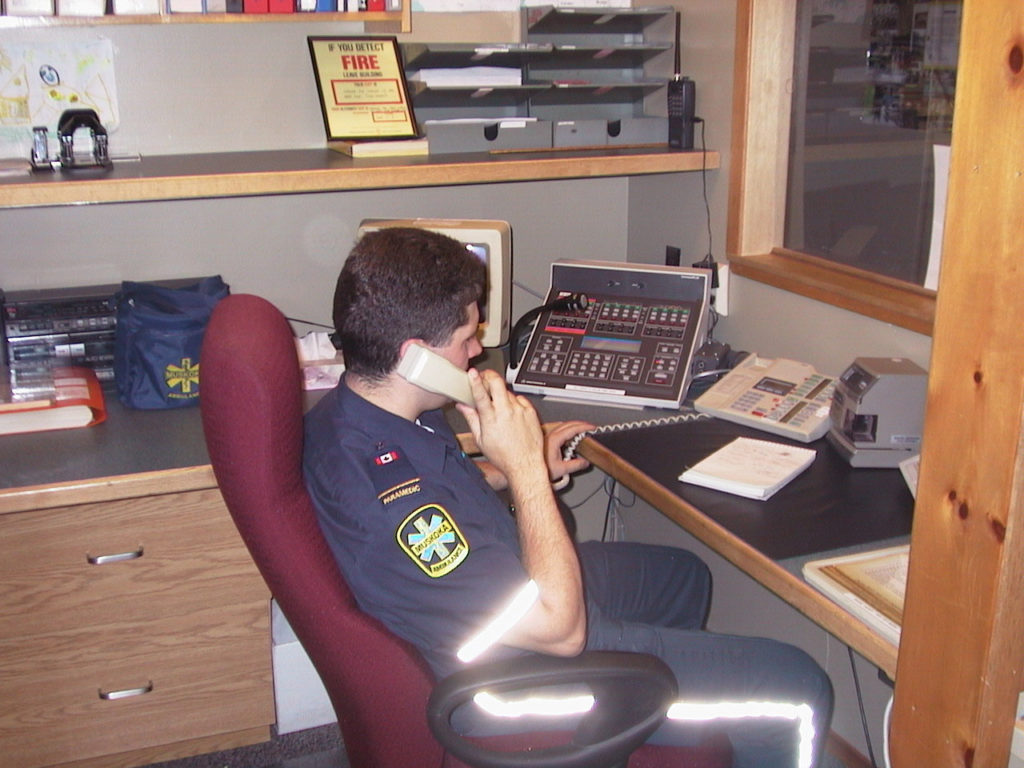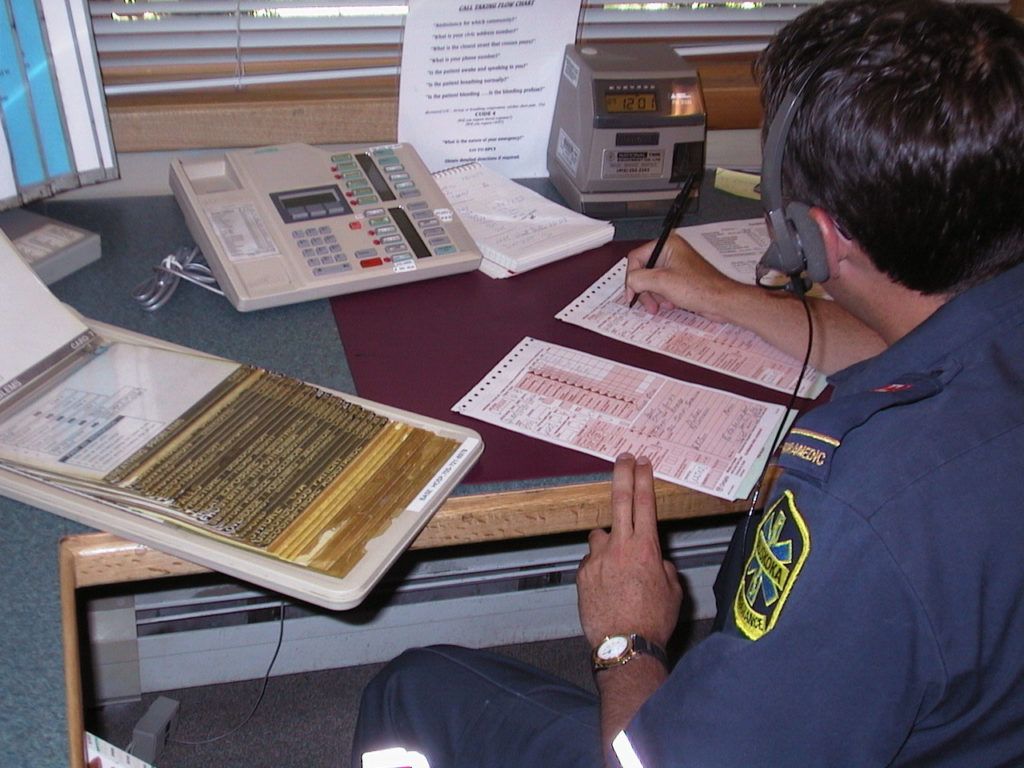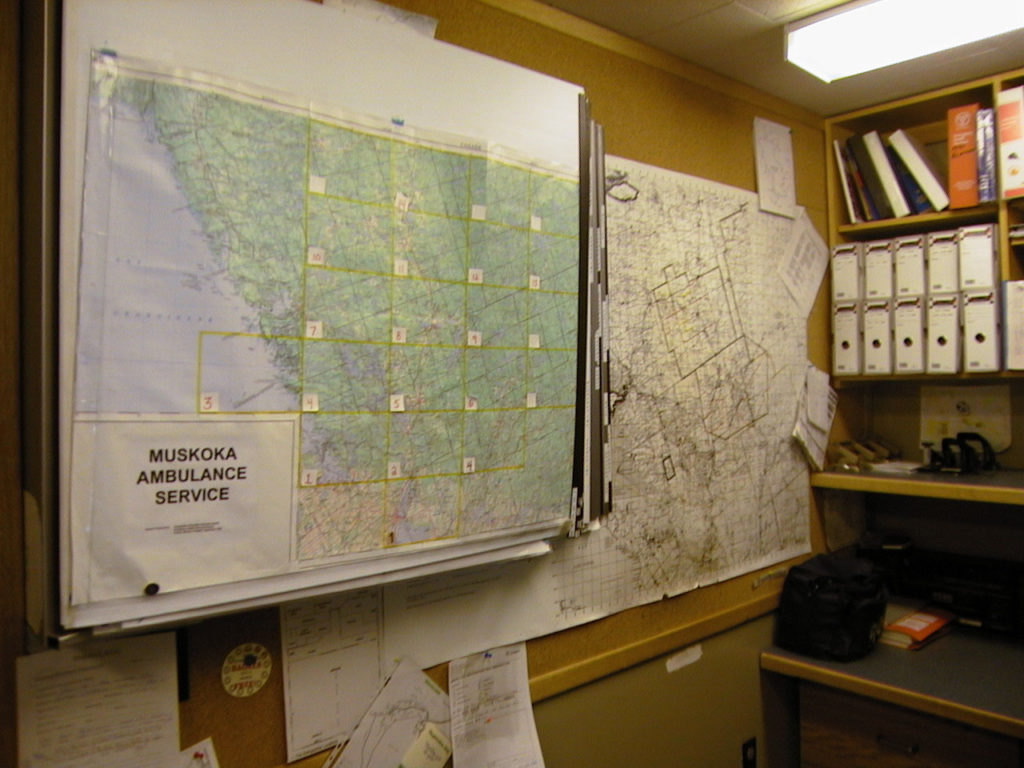To understand the job that our Ambulance Communication Officers do, we think it is important to start at the beginning because to know the significance of what we do now, you have to know where we have come from.
Communication Officers are often referred to as “the most important people you will never see, they are the voice behind the phone“.
Although closely connected and interdependent, Paramedic Services and Ambulance Communication Centres have become very separate functions. The specific responsibilities of each sector, the funding method and the framework for this relationship has changed dramatically over the last 60 years. Technology has greatly improved how we do our job and we are on the cusp of further enhancements.
In the early 1960’s, if you needed an ambulance, you dialed the local advertised 7 digit phone number and the phone was answered in Thwaites family home, information was taken and the ambulance was sent. There was no radio communication and no cell phones, so from the time the ambulance left, until it arrived at hospital with the patient, there was no contact. Imagine having to remember the local 7 digit phone number in an emergency? And, it was different in each area, usually based on telephone area codes or exchanges. Like most other community businesses, Ambulance Services relied on advertising their phone number in the local phone book or newspapers and by various “give away” products promoting their service. Ambulance Services were the same.
Over the years, one of the most successful initiatives to assist the public with knowing the number to call, was a reflective sticker that could be affixed to your hard line “home phone” and we handed these out by the thousands as well as placing them in multiple “phone booths” across our area. That’s a sign of the times! It is possible there are still some of those stickers to be found somewhere in Muskoka.
In 1968, the Ontario Government, under the Department of Health and later the Ontario Hospital Services Commission, initiated regulations and standards and formalized the licensing of any Ambulance Service. In return, the government, began to fund the cost of operations to the level they approved for a community. This eliminated the previous fee for service. Funding was primarily based on call volume.
Radio Communications were introduced which improved the safety of all responders and permitted information related to the patient findings, to be relayed from the ambulance, to the ambulance dispatch office and on to the local hospital. Calls for service were now answered in the ambulance office unless the crew was on a call, in which case the line was answered in our residence. This provided a pre-alert to the Emergency Department in order for Doctors and Nurses to be ready to receive critical patients.
Communications were often hindered by the geography of Muskoka, leaving many pockets without radio coverage. Locating a residence or a scene, relied heavily on the local geographic knowledge of the person answering the phone and a wall map to guide the search and best route of travel. There were many private roads, unnamed roads and unmaintained laneways.
In 1972 we built a new ambulance station in Bracebridge to house our staff, and our fleet of 5 vehicles. One small area (8 x 6) was designated as the “dispatch room”.

Like many other ambulance services, we were what was referred to as a “self-dispatched service”. That means that we took our own calls for service in our community(s) and dispatched our own ambulances. The paramedics took turns going on calls or answering phones.

All requests for ambulance service were now processed on the official Ministry of Health Ambulance Service Dispatch form called AS5D’s. These forms were hand written and manually stamped. Patient information, the address of the call, the priority and details of the call as well as ambulance movement relating to the call, was all documented on this form.

Across the Province, the Ministry began to “centralize” ambulance dispatch. Small self-dispatched services lost their local dispatch function as these services were consolidated into larger Centres. We expanded here in Muskoka as well when we were asked by the Ministry of Health to assume dispatch responsibility for Mactier Ambulance Service and later for the Huntsville/Burks Falls Ambulance Service.
Mapping and identifying call locations was always a challenge in Muskoka for both the call taker and the responding paramedics. Even as late as the 90’s we relied on knowledge and large wall maps in Dispatch.

The ambulances were equipped with large (12 x 12) orange map books that were supplied by the Ministry of Health. These were supposed to assist the paramedics in finding addresses. Imagine bouncing down a back country road, in the middle of the night , sitting in the passenger seat of the ambulance, , in the dark, flashlight in hand (or mouth) trying to balance this map book on your knee and flip the pages to find an address. All the while watching the roadway for the physical landmarks described by a caller (old dead tree stump, big round rock, red barn or those famous cottage signs with 25 faded names on them)
When did Muskoka get 911 Service?
911 Service came to Muskoka on December 17th, 1997!!
Few people understood what this involved at the time, or why it was so important. Ask any delivery person and they will attest to the convenience of following those roadside blue Civic Address signs. 911 is really just a telephone service. The same as 411 or 211.
However, in order for Bell to provide 911, a community had to undertake an onerous list of tasks;
- a road naming process that identified every road and
- every residence in the area to be serviced,
- identify each of those residences on a map and
- assign it a civic address number as well as
- a unique ESN number identifier that specified each of the emergency responders that would service that address.
Representatives from each lower tier municipality (Bracebridge, Gravenhurst, Huntsville, Lake of Bays and Georgian Bay Twp. and Moose Deer Point First Nation) and from each emergency service, came to a District table, to begin the process. One of challenges in this process was to sell the need for one map covering the entire District of Muskoka. Each municipal representative could only undertake responsibility within their own boundaries, but their decisions, their numbering system, the colour of their signs, the method of numbering, etc, had to connect with each neighbouring municipality. OPP and Ambulance Dispatch, were responsible for taking calls and assigning resources across the entire region and therefore required a map that connected all areas. Fire Departments on the other hand, responded to calls only within their own municipal jurisdictions and some local representatives struggled to appreciate the need for the broader picture.
We are grateful to the GIS department at the District of Muskoka for bringing mapping for this project together. This Department remains an important resource today and a collaborative partner in updating all area mapping, which is in turn used by the Communication Centre, the Paramedic Services and Fire Services.
In 1999, the Provincial Government downloaded responsibility for the provision of land ambulance service, to the Upper Tier Municipalities. This resulted in the official separation of dispatch functions from those of paramedic services.
Although some senior paramedics chose to remain as Dispatchers, it was necessary to increase our staffing compliment, so we hired our first civilian or non-paramedic staff and Muskoka Ambulance Communication Service was born.
In 2014 our Dispatch Centre relocated to it’s own separate location. This need was driven by the requirement for new technology in our Centre and the physical space required to accommodate the move to the Provincial Computer Aided Dispatch program (CAD)

Dispatch remains a partner in the delivery of Emergency Services in our Muskoka Communities. We are the first line of contact for the public and we are proud to serve you everyday.
